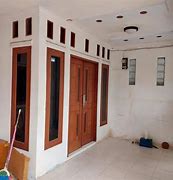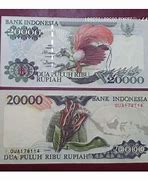
BlackBerry Style 9670 - Specifications
: 2.7 in, TFT, 360 x 400 pixels, 16 bit
: 2592 x 1944 pixels, 640 x 480 pixels
Brand name of the company that manufactures the device.
Model name of the device.
Аlternative names, under which the model is known.
Information about the width, i.e. the horizontal side of the device when it is used in its standard orientation.
Information about the height, i.e. the vertical side of the device when it is used in its standard orientation.
Information about the thickness/depth of the device in different measurement units.
Information about the weight of the device in different measurement units.
Estimated volume of the device, calculated from the dimensions provided by the manufacturer. Applies for devices in the form of a rectangular parallelepiped.
Information about the colors, in which the device is available in the market.
Information about the type and size (form factor) of the SIM card used in the device.
Information about the number of SIM cards, supported by the device.
CDMA (Code-Division Multiple Access) is a channel access method for communications within mobile networks. Compared to other 2G and 2.5G standards like GSM and TDMA, it provides increased data transfer speeds and allows more subscribers to connect simultaneously to the network.
CDMA2000 is a family of 3G standards for mobile networks based on CDMA and providing high-quality voice and broadband data services over wireless networks. Its advantages include stronger signal, fewer drop-offs and breakups, analog capabilities, very high spectral capacity, etc.
There are several network technologies that enhance the performance of mobile networks mainly by increased data bandwidth. Information about the communication technologies supported by the device and their respective uplink and downlink bandwidth.
Information about the operating system used by the device as well as its version.
RAM (Random-Access Memory) is used by the operating system and all installed applications. Data in the RAM is lost after the device is turned off or restarted.
Information about the capacity of the built-in storage of the device. Sometimes one and the same model may is offered in variants with different internal storage capacity.
The various types of memory cards are characterized by different sizes and capacity. Information about the supported types of memory cards.
Capacity of the memory card offered together with the device.
One of the main characteristics of the display is its type/technology, on which depends its performance.
In mobile devices display size is represented by the length of its diagonal measured in inches.
Approximate width of the display
Approximate height of the display
The ratio between the long and the short side of the display
The display resolution shows the number of pixels on the horizontal and vertical side of the screen. The higher the resolution is, the greater the detail of the displayed content.
Information about the number of pixels per centimeter (ppcm) or per inch (ppi) of the display. The higher the pixel density, the more detailed and clearer is the information displayed on the screen.
The color depth of the display is also known as bit depth. It shows the number of bits used for the color components of one pixel. Information about the maximum number of colors the screen can display.
The estimated percentage of the screen area from the device's front area.
The rear cameras of mobile devices use mainly a LED flash. It may arrive in a single, dual- or multi-light setup and in different arrangements.
One of the main characteristics of the cameras is their image resolution. It states the number of pixels on the horizontal and vertical dimensions of the image, which can also be shown in megapixels that indicate the approximate number of pixels in millions.
Information about the maximum resolution at which the rear camera can shoot videos.
Information about additional software and hardware features of the rear camera which improve its overall performance.
The loudspeaker is a device, which reproduces various sounds such as ring tones, alarms, music, voice calls, etc. Information about the type of speakers the device uses.
Information whether the device has an FM radio receiver or not.
The tracking/positioning service is provided by various satellite navigation systems, which track the autonomous geo-spatial positioning of the device that supports them. The most common satellite navigation systems are the GPS and the GLONASS. There are also non-satellite technologies for locating mobile devices such as the Enhanced Observed Time Difference, Enhanced 911, GSM Cell ID.
Wi-Fi communication between devices is realized via the IEEE 802.11 standards. Some devices have the possibility to serve as Wi-Fi Hotspots by providing internet access for other nearby devices. Wi-Fi Direct (Wi-Fi P2P) is another useful standard that allows devices to communicate with each other without the need for wireless access point (WAP).
The technology has several versions, which improve the connection speed, range, connectivity and discoverability of the devices. Information about the Bluetooth version of the device.
Bluetooth uses various profiles and protocols related to faster exchange of data, energy saving, better device discoverability, etc. Some of those supported by the device are listed here.
There are several USB connector types: the Standard one, the Mini and Micro connectors, On-The-Go connectors, etc. Type of the USB connector used by the device.
There are several versions of the Universal Serial Bus (USB) standard: USB 1.0 (1996), the USB 2.0 (2000), the USB 3.0 (2008), etc. With each following version the rate of data transfer is increased.
Тhe USB interface in mobile devices may be used for different purposes such as battery charging, using the device as a mass storage, host, etc.
Information whether the device is equipped with a 3.5 mm audio jack.
Information about some of the most widely used connectivity technologies supported by the device.
Information about some of the features and standards supported by the browser of the device.
List of some of the most common audio file formats and codecs supported standardly by the device.
List of some of the most common video file formats and codecs supported standardly by the device.
The capacity of a battery shows the maximum charge, which it can store, measured in mili-Ampere hours.
The battery type is determined by its structure and more specifically, by the chemicals used in it. There are different battery types and some of the most commonly used in mobile devices are the lithium-ion (Li-Ion) and the lithium-ion polymer battery (Li-Polymer).
2G talk time is the time period a battery charge will last, if one is constantly talking on the phone in a 2G cellular network.
2G stand-by time is the longest time a battery charge will last, if the device is not used but is constantly connected to the 2G cellular network.
3G talk time is the time period a battery charge will last, if one is constantly talking on the phone in a 3G cellular network.
3G stand-by time is the longest time a battery charge will last, if the device is not used but is constantly connected to the 3G mobile network.
Information about some additional features of the device's battery.
This SAR rating shows the maximum level of exposure to electromagnetic radiation taken when the device is placed next to the ear. The applicable limit for the US is 1.6 W/kg per 1 g of tissue. In the US the FCC tests and sets the SAR limits for all mobile devices, which are controlled by the CTIA.
The SAR body rating shows the maximum level of exposure to electromagnetic radiation when the device is positioned against the body at the hip. The highest SAR value of mobile devices allowed in the US is set to 1.6 W/kg per 1 g of tissue. It is specified by the FCC and the CTIA follows whether the mobile devices comply with this standard.
Information about other features of the device.
BlackBerry Curve 3G 9300
BlackBerry Style 9670
BlackBerry Curve 3G 9330
BlackBerry Classic Q20
BlackBerry Style 9670
BlackBerry Style 9670
BlackBerry Style 9670
BlackBerry Style 9670
BlackBerry Passport Silver Edition
BlackBerry Style 9670
BlackBerry Style 9670
BlackBerry Curve 9320
BlackBerry Bold Touch 9900
BlackBerry Style 9670
Dimensions: 60 x 96 x 18.5 mmWeight: 131 gRAM: 512 MBStorage: 512 MBDisplay: 2.7 in, TFT, 360 x 400 pixels, 16 bitBattery: 1150 mAh, Li-IonOS: BlackBerry 6.0Camera: 2592 x 1944 pixels, 640 x 480 pixels
The information on this website is provided on "as is, as available basis" without warranty of any kind. DeviceSpecifications is not responsible for any omissions, inaccuracies or other errors in the information it publishes. All warranties with respect to this information are disclaimed. Reproduction of any part of this website in its entirety or partially or in any form or medium without prior written permission is prohibited. The trademarks, marques and logos of the manufacturers of devices, software, hardware, etc. are the property of their respective owners.
cookie policy | terms of use about us | contact us | news | reviews © 2024 devicespecifications.com
Dear User, Our Support Team will be more than glad to assist you, all you need to do is contact them by pressing the button with 3 horizontal lines in the top right side of the lobby, and selecting the "Contact us" button. We will e-mail you as soon as possible. Thank you!
The Baroque is a highly ornate and elaborate style of architecture, art and design that flourished in Europe in the 17th and first half of the 18th century. Originating in Italy, its influence quickly spread across Europe and it became the first visual style to have a significant worldwide impact.
A defining characteristic of the Baroque style was the way in which the visual arts of painting, sculpture and architecture were brought together, into a complete whole, to convey a single message or meaning.
Baroque art and design addressed the viewer's senses directly, appealing to the emotions as well as the intellect. It reflected the hierarchical and patriarchal society of the time, developing through and being used by those in power – the church, absolute rulers and the aristocracy – to persuade as well as impress, to be both rich and meaningful. Compared to the control and carefully balanced proportions associated with the Renaissance, Baroque is known for its movement and drama.
Baroque's influence extended from Italy and France to the rest of Europe, and then travelled via European colonial initiatives, trade and missionary activity to Africa, Asia, and South and Central America. Its global spread saw Chinese carvers working in Indonesia, French silversmiths in Sweden and Italian hardstone specialists in France. Sculpture was sent from the Philippines to Mexico and Spain, whilst London-made chairs went all over Europe and across the Atlantic, and French royal workshops turned out luxury products that were both desired and imitated by fashionable society across Europe. However, as a style, Baroque also changed as it crossed the world, being adapted to new needs and local tastes, materials and contexts.
In China, the European pavilions were the grandest expressions of the Qing rulers' interest in the arts of Europe. These European-style palaces were part of the Yuanming Yuan or Old Summer Palace in Beijing, the Emperor Qianlong's summer residence. Designed by Jesuit priests, the pavilions – most of which were completed between 1756 and 1766 – were based on Baroque models and included grand fountains and statues. In the 1780s, a set of copperplate engravings depicting the European pavilions was commissioned. This album, a copy of which is in our collection, is an important visual record of the pavilions as they were destroyed by English and French troops in 1860.
An important feature of Baroque art and design is its use of human figures. Represented as allegorical, sacred or mythological, these figures helped turn the work into a drama to convey particular messages and to engage the emotions of the viewer. They have a sense of realistic immediacy, as if they had been stopped in mid-action. Facial expression, pose, gesture and drapery were all used to add dramatic details.
A bust of King Charles II of England in our collection perfectly captures the drama of Baroque portraiture. Portrayed in an animated fashion, his head is turned to one side and an elaborate wig cascades down over his lace cravat and billowing drapery. Such grand Baroque images of monarchs and powerful aristocrats were more common in 17th-century France than in England but Charles had spent much of his youth in mainland Europe and favoured European artists. The bust is in the tradition of flamboyant and imposing portraits of monarchs, and would have unambiguously asserted the King's status.
The performance of architecture
Baroque buildings were also dynamic and dramatic, both using and breaking the rules of classical architecture. Inside, the architecture echoed theatrical techniques – painted ceilings made rooms appear as if they were open to the sky and hidden windows were used to illuminate domes and altars.
Again, the design was used to convey specific meanings and emotions. Papal Rome became a key site for religious Baroque architecture. An example of the Baroque's theatricality can be found in Gianlorenzo Bernini's (1598 – 1680) design for St Peter's Square. Its grand, imposing curved colonnades, centred on an obelisk, are used to both overwhelm the visitor and to bring them into the church's embrace.
Baroque architecture also shaped the way the public spaces of the city appeared. Public celebrations played an important role in the political life of a nation. Typically, such events took place out of doors and were elaborately designed spectacles. Urban squares such as Piazza Navona in Rome and Place Louis-le-Grand (now Place Vendôme) in Paris were the backdrop for firework displays, lavish theatrical performances and processions in elaborate and expensive costumes.
Imposing architecture was also used to reinforce the power of absolute rulers, such as with the Palace of Versailles, in France – the most imitated building of the 17th century. In 1717, the Swedish architect Nicodemus Tessin the Younger compiled a "treatise on the decoration of interiors, for all kinds of royal residences, and others of distinction in both town and country", based on his own travel notes. One of the most expensive, recent innovations he recorded was the presence of mirrors so large they covered entire walls. He also noted the use of glass over the chimneypiece in the King's Chamber at Versailles.
A fascination with physical materials was central to the Baroque style. Virtuoso art objects made of rare and precious materials had long been valued and kept in special rooms or cabinets, alongside natural history specimens, scientific instruments, books, documents and works of art. However, during the Baroque period, the birth of modern science and the opening up of the world beyond Europe brought an increasingly serious interest in the nature and meaning of these exotic materials. Rarities such as porcelain and lacquer from East Asia became fashionable and were imitated in Europe. New techniques, such as marquetry (the laying of veneers of differently coloured woods onto the surface of furniture), developed by French and Dutch cabinet-makers and learned from them elsewhere, were also developed.
The value attached to such materials can be seen in a porcelain cup from our collection. Made between 1630 and 1650 in China originally as a writing-brush jar, it later had extravagant silver-gilt mounts added in London, which transformed the brush jar into a luxurious, decorative two-handled cup and cover.
Representations of the natural world, as well as motifs derived from human and animal forms, were popular decorative features. The most widespread form of Baroque floral decoration was a running scroll, often combined with acanthus – a stylised version of a real plant of the same name. A late 17th-century tankard in our collection features lavish floral decoration. The leaves of the flowers have been turned into scrolling foliage, while the flowers themselves have striped petals, likely to represent a tulip, another key motif of Baroque art.
The auricular style, which featured soft, fleshy abstract shapes, also emerged in the early 17th century, creating an effect that was ambiguous, suggestive and bizarre. In fact, the term 'Baroque' was a later invention – 'bizarre' was one of the words used at the time for the style we associate as Baroque today.
The theatre was a setting for magnificent productions of drama, ballet and opera – a new art form at that time. With their ornate costumes, complex stage sets and ingenious machinery, these performances created wonder and awe. Theatre was popular both with the public and at court. Written by Jean-Baptiste Lully for the French court of Louis XIV (reigned 1643 – 1715), the opera Atys was such a favourite with the King that it became known as "The King's Opera". Our collection includes a pen and ink design for the costume of the character Hercules in Atys. He is shown in a ballet pose, wearing a Roman-style costume, and identified by his club and lion skin.
Theatre also played a role in the power struggles between European courts. Rulers vied to outdo each other in the magnificence of their productions. In France, theatre and opera also became a key element of Louis XIV's cultural policy, which was used to control the nobility and express his power and magnificence. In the early 18th century, the theatre building itself acquired new importance as proof of courtly, civic or technological power. The resulting new buildings across Europe established the theatre in the form we know today.
However, by the mid-18th century, the Baroque style seemed increasingly out of step with the mood of the time, which placed increasing emphasis on reason and scientific enquiry. Baroque was criticised as an "immoral" style and art and design turned away from its use of emotion, drama and illusion, returning to a simpler style inspired by classical antiquity. It was only in the late 19th century that the style began to be critically reappraised once more.
The Baroque is a highly ornate and elaborate style of architecture, art and design that flourished in Europe in the 17th and first half of the 18th century. Originating in Italy, its influence quickly spread across Europe and it became the first visual style to have a significant worldwide impact.
A defining characteristic of the Baroque style was the way in which the visual arts of painting, sculpture and architecture were brought together, into a complete whole, to convey a single message or meaning.
Baroque art and design addressed the viewer's senses directly, appealing to the emotions as well as the intellect. It reflected the hierarchical and patriarchal society of the time, developing through and being used by those in power – the church, absolute rulers and the aristocracy – to persuade as well as impress, to be both rich and meaningful. Compared to the control and carefully balanced proportions associated with the Renaissance, Baroque is known for its movement and drama.
Baroque's influence extended from Italy and France to the rest of Europe, and then travelled via European colonial initiatives, trade and missionary activity to Africa, Asia, and South and Central America. Its global spread saw Chinese carvers working in Indonesia, French silversmiths in Sweden and Italian hardstone specialists in France. Sculpture was sent from the Philippines to Mexico and Spain, whilst London-made chairs went all over Europe and across the Atlantic, and French royal workshops turned out luxury products that were both desired and imitated by fashionable society across Europe. However, as a style, Baroque also changed as it crossed the world, being adapted to new needs and local tastes, materials and contexts.
In China, the European pavilions were the grandest expressions of the Qing rulers' interest in the arts of Europe. These European-style palaces were part of the Yuanming Yuan or Old Summer Palace in Beijing, the Emperor Qianlong's summer residence. Designed by Jesuit priests, the pavilions – most of which were completed between 1756 and 1766 – were based on Baroque models and included grand fountains and statues. In the 1780s, a set of copperplate engravings depicting the European pavilions was commissioned. This album, a copy of which is in our collection, is an important visual record of the pavilions as they were destroyed by English and French troops in 1860.
An important feature of Baroque art and design is its use of human figures. Represented as allegorical, sacred or mythological, these figures helped turn the work into a drama to convey particular messages and to engage the emotions of the viewer. They have a sense of realistic immediacy, as if they had been stopped in mid-action. Facial expression, pose, gesture and drapery were all used to add dramatic details.
A bust of King Charles II of England in our collection perfectly captures the drama of Baroque portraiture. Portrayed in an animated fashion, his head is turned to one side and an elaborate wig cascades down over his lace cravat and billowing drapery. Such grand Baroque images of monarchs and powerful aristocrats were more common in 17th-century France than in England but Charles had spent much of his youth in mainland Europe and favoured European artists. The bust is in the tradition of flamboyant and imposing portraits of monarchs, and would have unambiguously asserted the King's status.
The performance of architecture
Baroque buildings were also dynamic and dramatic, both using and breaking the rules of classical architecture. Inside, the architecture echoed theatrical techniques – painted ceilings made rooms appear as if they were open to the sky and hidden windows were used to illuminate domes and altars.
Again, the design was used to convey specific meanings and emotions. Papal Rome became a key site for religious Baroque architecture. An example of the Baroque's theatricality can be found in Gianlorenzo Bernini's (1598 – 1680) design for St Peter's Square. Its grand, imposing curved colonnades, centred on an obelisk, are used to both overwhelm the visitor and to bring them into the church's embrace.
Baroque architecture also shaped the way the public spaces of the city appeared. Public celebrations played an important role in the political life of a nation. Typically, such events took place out of doors and were elaborately designed spectacles. Urban squares such as Piazza Navona in Rome and Place Louis-le-Grand (now Place Vendôme) in Paris were the backdrop for firework displays, lavish theatrical performances and processions in elaborate and expensive costumes.
Imposing architecture was also used to reinforce the power of absolute rulers, such as with the Palace of Versailles, in France – the most imitated building of the 17th century. In 1717, the Swedish architect Nicodemus Tessin the Younger compiled a "treatise on the decoration of interiors, for all kinds of royal residences, and others of distinction in both town and country", based on his own travel notes. One of the most expensive, recent innovations he recorded was the presence of mirrors so large they covered entire walls. He also noted the use of glass over the chimneypiece in the King's Chamber at Versailles.
A fascination with physical materials was central to the Baroque style. Virtuoso art objects made of rare and precious materials had long been valued and kept in special rooms or cabinets, alongside natural history specimens, scientific instruments, books, documents and works of art. However, during the Baroque period, the birth of modern science and the opening up of the world beyond Europe brought an increasingly serious interest in the nature and meaning of these exotic materials. Rarities such as porcelain and lacquer from East Asia became fashionable and were imitated in Europe. New techniques, such as marquetry (the laying of veneers of differently coloured woods onto the surface of furniture), developed by French and Dutch cabinet-makers and learned from them elsewhere, were also developed.
The value attached to such materials can be seen in a porcelain cup from our collection. Made between 1630 and 1650 in China originally as a writing-brush jar, it later had extravagant silver-gilt mounts added in London, which transformed the brush jar into a luxurious, decorative two-handled cup and cover.
Representations of the natural world, as well as motifs derived from human and animal forms, were popular decorative features. The most widespread form of Baroque floral decoration was a running scroll, often combined with acanthus – a stylised version of a real plant of the same name. A late 17th-century tankard in our collection features lavish floral decoration. The leaves of the flowers have been turned into scrolling foliage, while the flowers themselves have striped petals, likely to represent a tulip, another key motif of Baroque art.
The auricular style, which featured soft, fleshy abstract shapes, also emerged in the early 17th century, creating an effect that was ambiguous, suggestive and bizarre. In fact, the term 'Baroque' was a later invention – 'bizarre' was one of the words used at the time for the style we associate as Baroque today.
The theatre was a setting for magnificent productions of drama, ballet and opera – a new art form at that time. With their ornate costumes, complex stage sets and ingenious machinery, these performances created wonder and awe. Theatre was popular both with the public and at court. Written by Jean-Baptiste Lully for the French court of Louis XIV (reigned 1643 – 1715), the opera Atys was such a favourite with the King that it became known as "The King's Opera". Our collection includes a pen and ink design for the costume of the character Hercules in Atys. He is shown in a ballet pose, wearing a Roman-style costume, and identified by his club and lion skin.
Theatre also played a role in the power struggles between European courts. Rulers vied to outdo each other in the magnificence of their productions. In France, theatre and opera also became a key element of Louis XIV's cultural policy, which was used to control the nobility and express his power and magnificence. In the early 18th century, the theatre building itself acquired new importance as proof of courtly, civic or technological power. The resulting new buildings across Europe established the theatre in the form we know today.
However, by the mid-18th century, the Baroque style seemed increasingly out of step with the mood of the time, which placed increasing emphasis on reason and scientific enquiry. Baroque was criticised as an "immoral" style and art and design turned away from its use of emotion, drama and illusion, returning to a simpler style inspired by classical antiquity. It was only in the late 19th century that the style began to be critically reappraised once more.
Our Water, Our Ingredients
We specially formulate our AZ water to match that of New York for our pizza dough and crusts so they have the same incredible taste, crunch, and feel as the original! Combine that with our whole milk mozzarella, our vine ripened tomatoes canned in 4 hours from picking, and fire to order on our stone deck ovens and you have an authentic quality that rises high above our competitors.
Webové stránky používají k poskytování služeb, personalizaci reklam a analýze návštěvnosti soubory cookie. Informace, jak tyto stránky používáte, sdílíme se svými partnery pro sociální média, inzerci a analýzy. Více informací o nastavení cookies najdete zde. Rozumím
Recommended memory cards for this phone from Amazon:
Phone Scoop earns a small commission from affiliate links to Amazon.
Menggambarlah bukan utk bikin gambar yg jelas, gambar yg bagus, gambar yg rapi.
Ke depannya, akan dishare hasil gambar Picasso style yang telah dipelajari selama Pandemi. 😂
BlackBerry Style 9670
Info Photos News Forum 29 Reviews 11
The first BlackBerry with a full QWERTY keyboard in a clamshell form factor. This messaging phone is notable for its large outer display, 5-megapixel camera, EVDO Rev. A 3G data, and Wi-Fi. Other features include 3.5mm audio jack, stereo Bluetooth, memory card slot, and advanced email.
Advertisements phone info continues below...
Advertisements phone info continues below...























